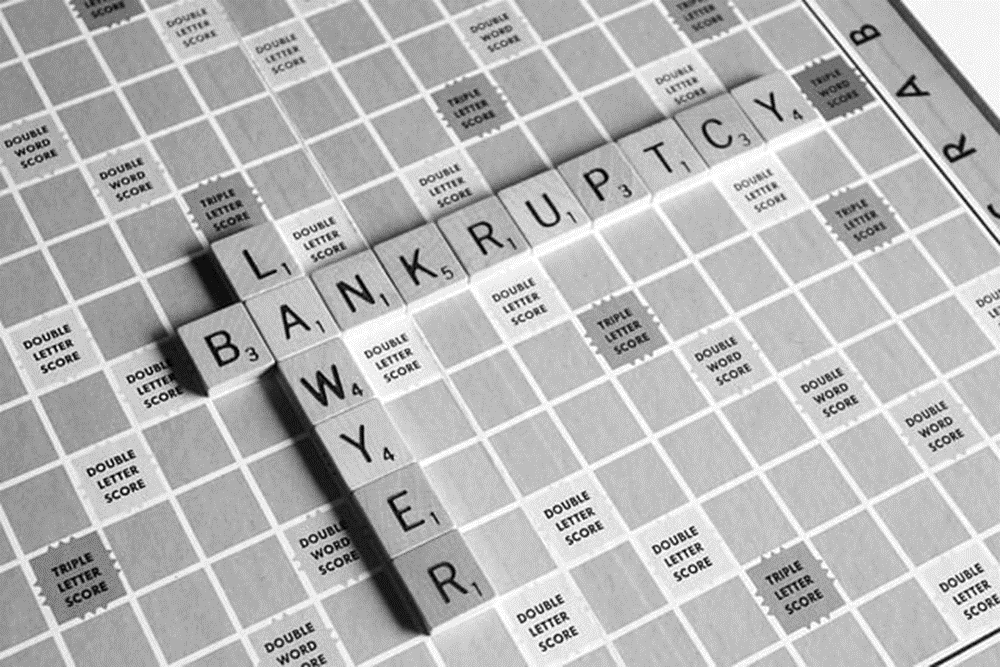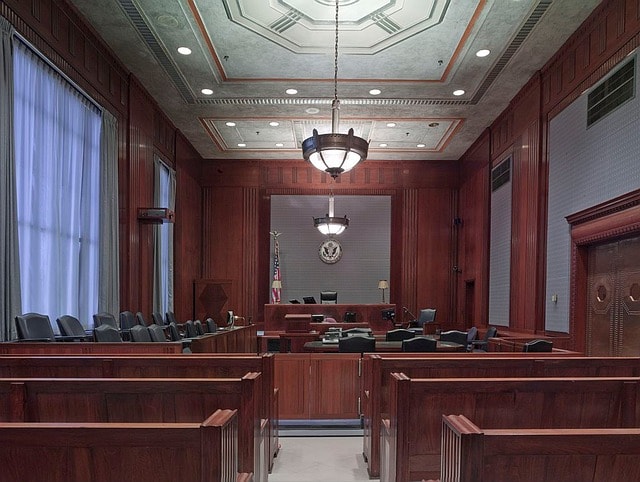Blog

What is an Avoidable Transfer in Chapter 7 Bankruptcy in Georgia?
Bankruptcy | September 1, 2024 | Andrew Morgan
Bankruptcy can be a daunting process, filled with legal jargon and complex procedures. One crucial aspect of Chapter 7 bankruptcy is understanding avoidable transfers, which can significantly impact the outcome of your case.
An avoidable transfer in Georgia bankruptcy occurs when a debtor moves assets to protect them from creditors. This is often done through gifts or sales. Some quick facts to know are:
- Asset protection: Attempting to shield assets through transfers is illegal.
- Trustee involvement: The bankruptcy trustee can reverse these transfers to recover assets.
- Potential penalties: Debtors who engage in avoidable transfers may face legal consequences.
There are many additional factors and details you need to know if you’re considering bankruptcy, especially if you are looking to sell assets for any reason. To fully understand your options and stay in compliance with the law, retaining an experienced Chapter 7 bankruptcy attorney is essential. You can also read on for some background on avoidable transfers in Chapter 7 bankruptcy in Georgia, to get a comprehensive overview of this challenging area.
What Are Preference Payments Under Bankruptcy Law?
In the realm of bankruptcy law, preference payments, often referred to as preferential transfers, are payments made to creditors shortly before filing for bankruptcy. These payments can be problematic because they can show favoritism to certain creditors over others.
Defining Preference Payments and Antecedent Debt
Preference payments are defined in Section 547 of the U.S. Bankruptcy Code. A payment is considered preferential if it meets the following criteria:
- It is made to a creditor for an existing debt.
- It is made within 90 days before the bankruptcy filing (or one year if the creditor is an insider, such as a relative or business partner).
- It allows the creditor to receive more than they would have under normal bankruptcy proceedings.
As for antecedent debt, the first term means “comes before.” So “antecedent debt” refers to an obligation that comes before a transfer.
Other Important Definitions
In addition to terms related to preferential transfers and antecedent debt, you should be aware of some additional bankruptcy terminology:
- Unsecured creditors are entities that you owe for a debt that is not secured by collateral. An unsecured creditor falls lower on the list than other preferred classes.
- A security interest is a financial stake that a secured creditor possesses in collateral when the debt is a secured loan.
- A judicial lien is an encumbrance on real estate or other property that exists because a creditor sued and won for an unpaid loan.
The Impact of Preference Payments
The rationale behind addressing preference payments is to ensure equitable distribution among creditors. If a debtor pays off a significant debt to one creditor just before filing for bankruptcy, other creditors are disadvantaged. The bankruptcy trustee can recover these payments, redistributing them fairly among all creditors.
Ordinary Course of Business: An Overview
One defense against the avoidance of preferential transfers is the ordinary course of business defense. This legal concept helps protect certain transactions from being undone by the bankruptcy trustee.
What Constitutes Ordinary Course of Business?
For a transaction to be considered within the ordinary course of business, it must meet specific criteria:
- The payment must be consistent with past transactions between the debtor and creditor.
- It should not deviate significantly from standard business practices within the industry.
Applying the Ordinary Course of Business Defense
To invoke this defense, debtors and creditors must provide evidence that the transaction in question was typical of their previous dealings. This can involve presenting past payment records, invoices, and contracts. If successful, the transaction is protected from being clawed back by the bankruptcy trustee.
What Is the “Look Back” or Preference Period in Bankruptcy?
The “look back” or preference period is a critical concept in bankruptcy proceedings, particularly concerning avoidable transfers. This period determines which transactions can be scrutinized and potentially undone.
Understanding the Preference Period
The preference period typically spans 90 days before the bankruptcy filing for ordinary creditors and one year for insider creditors. During this time, any payments made to creditors are subject to review by the bankruptcy trustee. The goal is to identify and reverse preferential payments, ensuring fair treatment of all creditors.
Exceptions to the Preference Period
Certain transactions are exempt from being considered preferential, including:
- Payments for new goods or services.
- Transactions conducted within the ordinary course of business.
- Small payments below a specific threshold.
Understanding these exceptions is crucial for both debtors and creditors in protecting legitimate transactions from being clawed back.
You’ll Report Your Preferential Payments in Your Bankruptcy Paperwork
Accurate reporting of preferential payments in bankruptcy paperwork is essential for a transparent and fair process. This section of the paperwork helps the bankruptcy trustee identify and evaluate potentially avoidable transfers.
Importance of Accurate Reporting
Failing to report preferential payments can lead to severe consequences, including the dismissal of the bankruptcy case or charges of bankruptcy fraud. Debtors must meticulously document all payments made to creditors within the preference period.
How to Report Preferential Payments
Debtors should provide detailed information about each payment, including:
- The date of the payment.
- The amount of the payment.
- The creditor’s name and relationship to the debtor.
- The nature of the debt being paid.
Proper reporting helps streamline the bankruptcy process and ensures that all transactions are appropriately evaluated.
Bankruptcy Trustee Adversary Proceeding: “Clawback Suits”
A significant role of the bankruptcy trustee is to initiate adversary proceedings, commonly known as clawback suits, to recover preferential payments. These proceedings are essential for redistributing assets fairly among creditors.
The Process of Clawback Suits
Clawback suits begin with the trustee identifying potentially preferential payments. The trustee then files a lawsuit against the creditor to recover the funds. If successful, the recovered funds are redistributed among all creditors.
Defending Against Clawback Suits
Creditors have several defenses against clawback suits, including:
- Ordinary course of business defense.
- Contemporaneous exchange for new value defense.
- Subsequent new value defense.
Understanding these defenses can help creditors protect legitimate transactions from being undone.
How the Creditors 341 Meeting Works
The 341 creditors meeting, also known as the meeting of creditors, is a pivotal event in the bankruptcy process. This meeting allows creditors and the bankruptcy trustee to review the debtor’s financial situation and clarify any issues related to the bankruptcy filing. Understanding how the 341 meeting works can help debtors prepare for this critical step with confidence.
What is the 341 Creditors Meeting?
The 341 creditors meeting is named after Section 341 of the U.S. Bankruptcy Code. It is a mandatory meeting where the debtor must appear and answer questions about their financial affairs under oath.
The primary purpose of the 341 meeting is to:
- Allow the trustee to verify the accuracy of the bankruptcy paperwork.
- Give creditors an opportunity to ask questions about the debtor’s financial situation and the bankruptcy filing.
- Ensure that there are no hidden assets or undisclosed information.
The meeting typically includes the debtor and their attorney, the bankruptcy trustee, and creditors who choose to attend (although they rarely do). The meeting is relatively informal, but the debtor must provide truthful and complete answers to all questions posed by the trustee and creditors.
Before the 341 Meeting: Review of Schedules, Statements, and Preliminary Documents
Proper preparation is crucial for the 341 meeting. Debtors must review and gather several documents to ensure they can provide accurate information during the meeting. The debtor’s bankruptcy schedules and statements are comprehensive documents that outline their financial situation. These include:
- Schedule A/B: Details all assets, including real estate, personal property, and financial accounts.
- Schedule D/E/F: Lists secured, priority, and unsecured debts.
- Schedule I/J: Outlines the debtor’s income and expenses.
- Statement of Financial Affairs: Summarizes recent financial transactions and other relevant financial activities.
In addition to schedules and statements, debtors should gather other necessary documents, such as:
- Recent pay stubs or income statements.
- Tax returns for the past few years.
- Bank statements.
- Proof of any significant transactions within the past year.
Having these documents readily available will help ensure a smooth and efficient 341 meeting.
At the Creditors Meeting: The Trustee’s Initial Inquiry and Testimony
The 341 meeting begins with the trustee’s initial inquiry into the debtor’s financial affairs. The trustee’s questions are designed to verify the accuracy of the debtor’s bankruptcy paperwork and uncover any potential issues.
During the initial inquiry, the trustee will:
- Verify the debtor’s identity by checking their photo ID and Social Security card.
- Ask the debtor to confirm that the information in their bankruptcy paperwork is accurate and complete.
- Inquire about any recent financial transactions, including preferential payments and transfers of property.
The debtor must provide testimony under oath, answering the trustee’s questions honestly and thoroughly. Common questions may include:
- Income and Expenses: Details about the debtor’s current income and monthly expenses.
- Assets and Debts: Information about the debtor’s assets and liabilities.
- Recent Financial Transactions: Any significant transactions, such as large purchases or transfers of money or property, within the past few years.
The debtor’s attorney can provide guidance and support during this process, but the debtor must be prepared to answer questions directly.
What Happens After the Creditors Meeting?
After the 341 meeting, the bankruptcy process continues with several important steps. The outcomes and next steps can vary depending on the specifics of the case.
Following the 341 meeting, the trustee will:
- Review the debtor’s testimony and any additional documents provided.
- Determine if there are any assets that can be liquidated to pay creditors.
- Decide whether to pursue any avoidable transfers or preferential payments.
If the trustee identifies any issues or potential fraud, they may take further legal action, which could complicate the bankruptcy process.
Creditors have a limited time after the 341 meeting to file objections to the debtor’s discharge or assert claims against the debtor’s assets. Most creditors do not attend the 341 meeting, but they may still take action if they believe there is a valid reason to challenge the bankruptcy case.
If there are no objections or complications, the debtor will receive a discharge of their eligible debts. This discharge typically occurs a few months after the 341 meeting and marks the end of the bankruptcy process. The discharge releases the debtor from personal liability for most debts, providing a fresh financial start.
After receiving a discharge, the debtor should take steps to rebuild their credit and financial stability, including:
- Credit Monitoring: Regularly checking credit reports to ensure accuracy.
- Responsible Credit Use: Using credit wisely and paying bills on time.
- Financial Planning: Creating a budget and saving for the future to avoid financial difficulties.
Understanding what happens after the 341 meeting helps debtors handle the final stages of their bankruptcy case and move forward with confidence.
Takeaway Points
Understanding avoidable transfers in Chapter 7 bankruptcy is essential for debtors and creditors alike. By comprehending preference payments, the ordinary course of business defense, the preference period, and the process of reporting and recovering preferential payments, individuals can manage the complexities of bankruptcy more effectively. Thorough preparation for the 341 meetings and transparency throughout the process are crucial for a fair and successful bankruptcy outcome. If you’re dealing with bankruptcy in Georgia, seeking legal advice from a qualified bankruptcy attorney can provide the guidance and support you need to protect your interests and achieve a fresh financial start.
Get Expert Guidance on Your Bankruptcy Case
Overcoming the complexities of bankruptcy requires expert guidance. At Morgan & Morgan, our experienced bankruptcy attorneys are dedicated to providing you with the support and advice you need. Don’t wait—reach out for a free consultation now. Please call us at (706) 843-2905 to speak with a compassionate professional who can help you through this challenging time.
FAQs About Your Bankruptcy Filing
Understanding the intricacies of bankruptcy can be challenging, especially when it comes to complex concepts like avoidable transfers and trustee powers. Here are some frequently asked questions that can help clarify these topics.
What does it mean for a trustee to avoid a transfer?
For a trustee to avoid a transfer means to undo a transaction made by the debtor before filing bankruptcy. This process allows the bankruptcy court to recover assets that were improperly transferred out of the debtor’s property to benefit certain creditors over others.
The main goal of avoiding transfers is to ensure an equitable distribution of the debtor’s bankruptcy estate. By recovering property transferred improperly, the trustee can redistribute it fairly among all creditors. This includes addressing issues like preference claims and fraudulent conveyances.
What is an avoidable preference in bankruptcy?
An avoidable preference is a payment or transfer of property made by the debtor before filing bankruptcy that unfairly favors one creditor over others. To be considered an avoidable preference, a transfer must meet these criteria:
- Made to or for the benefit of a creditor.
- For an antecedent debt (a debt existing before the transfer was made).
- Made while the debtor was insolvent.
- Made within 90 days before the bankruptcy filing (or one year if the creditor was an insider).
- Allows the creditor to receive more than they would have under the bankruptcy proceedings.
These preference claims help the trustee recover and redistribute assets within the debtor’s bankruptcy estate.
What is an avoidance claim in bankruptcy?
An avoidance claim in bankruptcy is a legal action taken by the trustee to recover property transferred before the debtor filed for bankruptcy. This ensures that all creditors are treated fairly and equitably.
Avoidance claims can include:
- Preference Claims: Recovering preferential payments made shortly before filing bankruptcy.
- Fraudulent Transfers: Undoing transfers made with the intent to defraud creditors.
The bankruptcy court grants the trustee these avoidance powers to protect the integrity of the bankruptcy process and maximize the value of the debtor’s bankruptcy estate.
How far back can a trustee look to recover a preferential payment?
The trustee can look back up to 90 days before the bankruptcy filing to recover preferential payments. For insider creditors, this period extends to one year. The look-back period is crucial for identifying improper transfers of the debtor’s property that may have unfairly favored certain creditors. By recovering these payments, the trustee can ensure a fair distribution of the debtor’s bankruptcy estate.
What are the avoidance powers of a trustee in Chapter 7?
In Chapter 7 bankruptcy, the trustee has specific avoidance powers to recover and redistribute assets that were improperly transferred before the bankruptcy filing. The trustee’s avoidance powers include:
- Preference Claims: Recovering payments that favored certain creditors.
- Fraudulent Transfer Claims: Undoing transfers made with the intent to defraud creditors.
- Reclaiming Security Interests: Addressing improperly perfected security interests in the debtor’s property.
These powers allow the trustee to maximize the value of the debtor’s bankruptcy estate for equitable distribution among creditors.
What is an example of an antecedent debt owed to a creditor?
An antecedent debt refers to a debt that was incurred before a particular transaction or transfer. For example, if a debtor owes money to a creditor for services rendered six months before the debtor files for bankruptcy, this debt is considered antecedent.
Antecedent debts are significant in preference claims because payments made on such debts shortly before filing bankruptcy can be recovered by the trustee. This ensures that no creditor receives more than their fair share from the debtor’s bankruptcy estate.
By understanding these FAQs, debtors and creditors can better deal with the complexities of bankruptcy filings and the trustee’s role in avoiding improper transfers. If you’re dealing with these issues, consulting with a qualified bankruptcy attorney can provide valuable guidance and support.
Take Control of Your Financial Future
Facing bankruptcy can be overwhelming, but you don’t have to go through it alone. Morgan & Morgan is here to help you understand your options and protect your assets. Contact us for a free consultation to discuss your case and develop a plan tailored to your needs. Visit our website
Related Content: What to expect when going to court for a Chapter 7 bankruptcy
SHARE
RELATED POSTS
What Happens if You Transfer Money Before Filing Bankruptcy in Georgia?
Transfer of assets before bankruptcy can have serious consequences. Bankruptcy trustees can: Reverse fraudulent transfers to recover assets. Investigate financial transactions before filing. Report hidden assets to the court. Lee Paulk MorganLee Paulk Morgan With…
Can I Keep The Furniture I Am Financing After I File For Bankruptcy In Georgia?
Yes, you can keep the furniture financed in Georgia after bankruptcy. Georgia exempts a portion of household goods, including furniture. The exemption is $5,000 for single filers and $10,000 for married couples filing jointly. There’s…








